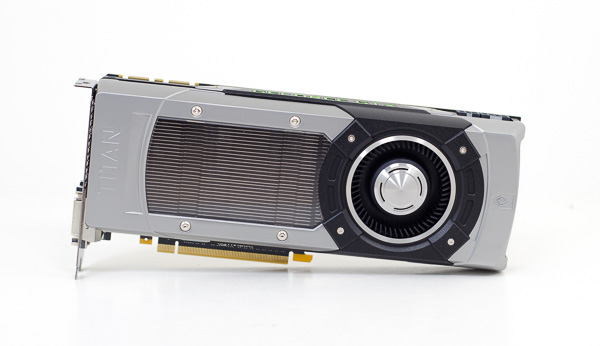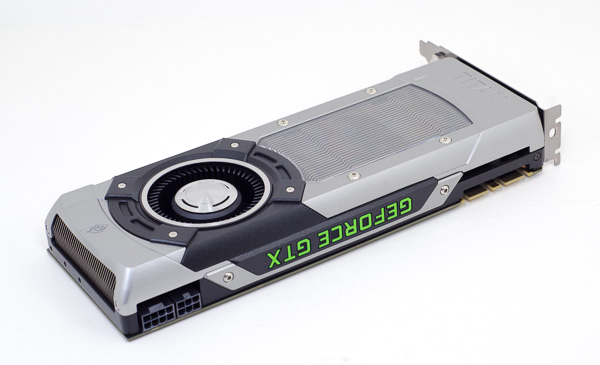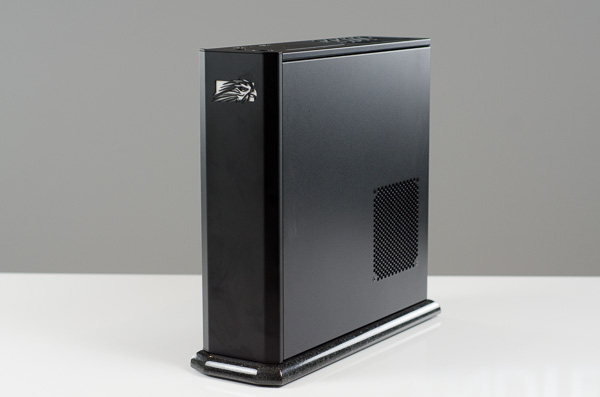High-End Meets Small Form Factor: GeForce Titan in Falcon Northwest's Tiki
by Anand Lal Shimpi on February 19, 2013 9:00 AM ESTToday NVIDIA officially unveiled its first consumer facing GK110 graphics card: the GeForce Titan. Although GK110 launched last year, gamers didn't have access to it as it launched exclusively as a Tesla part. No less than 18,688 GK110 based Tesla K20X GPUs were deployed in the Titan Supercomputer at the Oak Ridge National Laboratory, which did a good job of eating up almost all GK110 production. With the Titan Supercomputer launched and out of the way, GK110 could make its way into the consumer space. The development costs and effort to bring a 7.1 billion transistor chip to market are huge, so it makes sense to try and sell as many chips as possible, even if they're well above the sweet spot on the price/performance curve.
NVIDIA saw three target markets for GeForce Titan: 1) CUDA developers, 2) ultra high-end gamers looking for great 3-way SLI performance and 3) users looking to build a high-end small form factor gaming machine that only has room for a single, dual-slot graphics card at most. The first group is easy to address, and later this week we'll have compute benchmarks to begin to address that community (and perhaps even more over the coming months). It's the second and third groups that require a somewhat different approach.
To showcase what could be done with GeForce Titan, NVIDIA asked some of its closest system builder partners to build gaming systems around the new GPU. We had the choice of getting either a 3-way SLI system or a single card, small form factor machine. We were faced with a bit of a dilemma. A 3-way SLI system would mean we'd be able to share Titan SLI performance data, but the more exciting system would be the SFF machine. Ryan asked for both.
Given that Ryan is tasked with actually reviewing GeForce Titan, it made sense for him to get the beefy 3-way SLI system so he could get the review done. Seeing as how we only had a few days scheduled with Titan before the NDA would lift on performance data, Ryan didn't have the bandwidth to look at both systems and do the standalone GeForce Titan review. I had a bit of time before MWC, so I offered to help.
Although we're able to talk about experiences with Titan and the specs of the platform today, our full GPU review complete with performance won't hit until Thursday. This is just a chance to get an early look at the card and some of the types of systems that will use it. Ryan's piece will look at a 3-way SLI rig from Origin as well as the details of the GeForce Titan itself.
The Tiki
I've never technically purchased a pre-built desktop PC. My first build was an AMD 486 DX4-120, and before that I just used my dad's Packard Bell 386 SX-20. Excluding Macs and notebooks, I've always built my own PCs. When NVIDIA asked what vendor I'd like to have build me a GeForce Titan machine, I threw the ball back in their court: "whatever's best".
What showed up was this, the Tiki from Falcon Northwest.
I'd heard of the Tiki before, and I'd seen photos, but I had never encountered the system up close. The idea of building a small form factor, high performance gaming PC was always intriguing but I never got around to building one myself. By the time mini-ITX motherboards had matured enough, and high-end CPUs finally dropped below 100W, I stopped having time to play PC games regularly. Whenever I had the time to game, I'd just toss a bunch of components on the test bench and use that. A friend dropped by with a BitFenix Prodigy build last year and I was very impressed, tempted to go off and build one myself even. I never did, that pesky lack of time reared its ugly head once more.
I shared this backstory with Kelt Reeves, Falcon NW's President. To my surprise he told me that many of his customers were in a similar situation: very time constrained. That's why they turned to him to build them systems.













33 Comments
View All Comments
Aikouka - Tuesday, February 19, 2013 - link
I wanted to add one thing to your comparison between the Tiki and the 360 that I think makes it even more interesting: the power supply. It's pretty easy to forget given we don't necessarily consider it, but if they stuffed the power supply into the 360, it would probably come even closer to the size of the Tiki.As for Steam's Big Picture Mode (BPM), what I would love to see is better thought to the user experience. I use BPM on my Gaming HTPC along with Windows Media Center (for the superior CableCard-based tuner support). Well, the problem is that there isn't an easy way to cycle between the two pieces of software. The biggest problem is that when you exit BPM, it doesn't actually exit Steam, which can be a good thing since logging into Steam takes an absurdly long time. However, that means that you can't use a piece of software to track when Steam closes and have it reopen WMC. There's a piece of software like that which allows for switching to XBMC from within WMC.
lmcd - Tuesday, February 19, 2013 - link
Or Big Picture could just load in video plug-ins, and handle content management. Since Valve is in digital distribution I could see them teaming up with 7digital or someone to get themselves a store.cjs150 - Tuesday, February 19, 2013 - link
NVidia please produce a watercooled version! That + an i7-3770k in a Silverstone TJ08 with a 200x200mm radiator would produce a quiet, cool and super powerful system.Very impressed with how little power needed to run that system.
Only problem for me is that the GPU is way too powerful for my needs. I havent yet moved up to 1920x1080 monitor.
Falcon sure builds pretty systems
Gigaplex - Tuesday, February 19, 2013 - link
Why would NVIDIA build a watercooled version? They pretty much just build a reference platform and sell chips, it's the OEMs that do custom cooling solutions.alpha754293 - Tuesday, February 19, 2013 - link
What kind/type/speed and how much RAM is in the system that you reviewed here?mavere - Tuesday, February 19, 2013 - link
"My perspective on what's considered quiet has been sort of warped by the fact that for the past two months I've been using a 27-inch iMac as my primary system."Uhhh I get the sense that you're trying to qualify your perspective on system noise somehow, but I don't think iMacs, especially the 27" ones, are mass-market enough to be used as a general reference point.
Can you rephrase and/or link to a review? Thanks.
chizow - Tuesday, February 19, 2013 - link
Eh....don't think so. There's nothing in there that would justify that price point, it makes Alienware's X-51 seem like a steal. And the X-51 looks much nicer to boot.I do like the innovation with the daughter/riser card accomodating a full-sized GPU. Now that the cat is out of the bag on that one however, I expect more OEMs to follow suit, albeit at a much cheaper price tag. $1k + $300 for a GTX 670 would be a very attractive option, imo, and make up for the lack of grunt on the X-51's GPU options.
JonnyDough - Wednesday, February 20, 2013 - link
I'd rather have the IO Sheild/Backpanel at the top of the case, rather than the bottom for the exact reason you listed Anand. You can see it better when plugging in peripherals.The PSU and video card connections can be at the bottom. Plus, your mouse cord might be too short to accommodate your desk. You just never know.
brucek2 - Wednesday, February 20, 2013 - link
I'm surprised there were 1080p settings for Far Cry 3 that this system couldn't play. If this system can't do it... what system were they targeting?!? I guess its nice that game looks to future hardware improvements but targeting a level of hardware power that's significantly above this system seems like a very large gap.marc1000 - Wednesday, March 6, 2013 - link
it's nice to see that BOTH fans are intakes on this small chassis. they are also made by scythe. I wonder where is the PSU air output, but anyway for thermals this is a great design. the only problem would be how to block dust from entering the system.